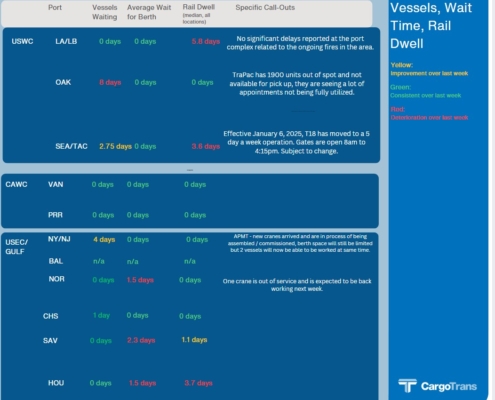MARKET UPDATE: JANUARY 17TH, 2025
CT MarketWatch: Riding the Dragon’s Tail – What Chinese New Year Means for Global Shipping
As we step into 2025, the global logistics market prepares for another year of transformation. Coming out of a challenging 2024, signs of stability are emerging in transpacific sea freight rates, alongside continued growth in air freight demand. However, challenges remain, with shifting NMFC classifications for US Trucking Market requiring caution and flexibility, the industry navigating blank sailings, GRI adjustments, and the evolving landscape of e-commerce. With the upcoming Chinese New Year and potential tariff increases adding further complexity to the mix, this update explores the key trends, strategies, and insights that will shape the logistics sector in the year ahead.
Key Topics to Watch in the Coming Months: Chinese New Year & Trump Tariffs
Key Dates for Chinese New Year 2025
- January 22-28, 2025: Pre-holiday production rush begins.
- January 29, 2025: Chinese New Year Eve—factory shutdowns commence.
- January 30 – February 12, 2025: Official holiday period.
- Mid to Late February 2025: Gradual resumption of operations.
Key Impacts of Chinese New Year on Logistics
- Factory Shutdowns and Production Halts
Many factories in China close for an extended period starting around January 22, 2025, with some not fully resuming operations until mid-February. This creates a pre-holiday production surge as factories strive to meet deadlines. Post-holiday, it may take weeks for production to return to normal, leading to delays in order fulfillment. - Increased Freight Transportation Rates
The rush to ship goods before the holiday drives up demand for freight services, leading to elevated transportation costs. Ocean, air, and land freight rates often see significant increases, with carriers implementing peak season surcharges. - Congestion and Shipping Delays
Ports and logistics networks become congested before and after the holiday as shipments are expedited pre-CNY and backlogs are processed post-CNY. This often results in delays in transit and limited container availability, causing ripple effects across supply chains. - Decreased Workforce and Slower Operations
A large portion of the workforce takes extended leave, reducing staffing levels at factories, ports, and transportation hubs. Slower processing times may persist even after the official holiday period.
Can the President-Elect Enact Broad Tariff Measures?
President-elect Trump has proposed significant tariffs, including:
- A 10–20% blanket tariff on all imports.
- Up to 100% tariffs on Chinese goods.
- 25% tariffs on imports from Mexico and Canada.
While immediate implementation of such tariffs poses challenges, legal frameworks grant the executive branch notable authority to act swiftly under certain conditions.
Legal Authority for Presidential Tariff Implementation
- Congressional Delegation of Power
Although the U.S. Constitution grants Congress the power to impose taxes, including tariffs, trade laws have delegated substantial authority to the president. This allows for tariff imposition without congressional approval, bypassing typical checks and balances. - Mechanisms for Tariff Imposition
- Trade Laws (1930s–1970s): Allow the president to impose tariffs to address unfair trade practices. These measures, however, require investigations and public notice periods, making immediate action less feasible.
- International Emergency Economic Powers Act (IEEPA) of 1977: Enables the president to act swiftly against “extraordinary” threats. This mechanism could bypass traditional reviews and public input, allowing rapid implementation, though its scope and legality remain debated.
While imposing tariffs immediately is complex, IEEPA provides a legal pathway for rapid action. However, the economic and diplomatic consequences of such measures require careful consideration.
MARKET WATCH
Ocean Freight
Transpacific Rate Market and Trends
Transpacific Rates and Market Dynamics:
Transpacific trade lanes are experiencing relative stability as carriers manage capacity through blank sailings and cautious adjustments. Rates are steady heading into 2025, influenced by balanced supply-demand dynamics.
Carrier Strategy:
Carriers are employing strategic capacity management, including blank sailings, to stabilize rates during slower demand periods. These tactics are helping mitigate the impact of fluctuating volumes and maintain a balanced market.
North and South American Rate Trends
North America:
- Rates remain stable, showing a slight decrease in both West Coast and East Coast lanes due to the resolution of ILA Labor Disputes.
North Asia to West Coast South America (WCSA):
Overcapacity and reduced demand are exerting downward pressure on rates.
North Asia to East Coast South America (ECSA):
Modest rate increases are noted due to seasonal demand shifts.
European & APAC Updates
Europe:
Spot rates on Asia-Europe lanes remain stable as carriers prioritize flexible contracts to optimize revenue. This strategy is helping maintain equilibrium amid fluctuating demand.
APAC:
East Coast North America (ECNA):
Rate increases driven by GRIs and labor-related uncertainties.
West Coast North America (WCNA):
Rates are climbing due to strong demand and constrained capacity, reflective of the market’s tight dynamics.
Air Freight
-
Spot Rates:
- Air freight spot rates are on an upward trajectory, propelled by sustained e-commerce growth and robust demand in key trade lanes. Asia-Pacific lanes saw an 8% week-over-week increase in late December 2024, with similar trends observed in African and European markets.
Yearly Trends:
- The Middle East and South Asia are becoming increasingly pivotal, with 2024 seeing a 62% rate increase. Asia-Pacific and Europe also recorded 19% growth each, signaling a shift in trade flows and market priorities. For 2025, these trends are expected to intensify, supported by expanded air freight capacity and improved operational efficiencies.
Domestic
Less-Than-Truckload (LTL):
GRI (General Rate Increases) Season is Here
As the year progresses, carriers are prioritizing tighter control over operating costs and pricing strategies. General rate increases (GRIs) in the mid-single to low double digits have been announced. At the same time, some carriers are introducing strategic pricing adjustments to attract new volume in lanes with excess capacity.
Strengthening Relationships with Providers
Now more than ever, building strong relationships with your transportation providers is essential. Partnering with reliable providers and exploring new opportunities can help optimize your supply chain and mitigate costs.
A key industry trend is moving away from viewing transportation as a simple “commodity.” Collaborating effectively with your 3PL can significantly influence costs. A 3PL offers access to diverse carriers and additional capacity, but the way you engage with your 3PL impacts the overall cost to serve your business.
Efficiency Drives Cost Savings
For instance, quoting, booking, and tendering shipments across multiple emails can increase costs due to the added administrative effort required. On the other hand, customers who leverage a Transportation Management System (TMS) for their Less-Than-Truckload (LTL) shipments often benefit from more competitive rates. This streamlined process reduces manual tasks for the 3PL, resulting in cost efficiencies that can be passed on to you.
By embracing efficient practices and fostering strong partnerships, you can navigate the GRI season with greater confidence and cost control.
Need Help Navigating the Current Freight Market?
📰 IN OTHER NEWS…
CBP unveils its proposed changes to rules on low-value imports
The US Customs & Border Protection (CBP) agency yesterday unveiled its much-awaited proposals to amend de minimis, or Entry of Low -Value Shipments (ELVS), rules.
While the de minimis level of $800 will not change, CBP is keen to ensure that more data on low-value shipments is received. It said: “Today’s rule-making update focuses on data entry.”
Read More
Vietname sets new records for exports in 2024, runs trade surplus for 9 straight years
The Southeast Asian country’s import-export turnover also hit an all-time high of $786.3 billion last year, picking up 15.4 percent over 2023.
Read More
Ripples from 2025 CNY ‘may still be rocking the boats in summer’
Danish forwarder DSV has warned that ripples from the Chinese New Year (CNY) holiday could be felt into the second half of the year, as the looming alliance reshuffle would exacerbate network disruption and lead to surcharges and blank sailings.
Read More
New Tariffs Are Coming. here’s How to Prepare.
No one yet knows what trade policies President-elect Trump will enact once in office, but three things are clear: First, during his first term, he imposed new punitive tariffs. Second, he has repeatedly said he plans to levy new or increased tariffs quickly once inaugurated for his second term. Third, US trading partners could—and probably would—retaliate with measures of their own.
Read More
Have you met Captain?
Our End-to-End Visibility Platform
Visibility done right so that you can manage compliance, budget and expectations. Empowering you to confidently control your supply chain and deliver happiness to your customers.
We are ready to help
Logistics Solutions at your fingertips
We have team members ready to answer your questions.
Give us a call 516.593.5871 or chat on our website 💬










